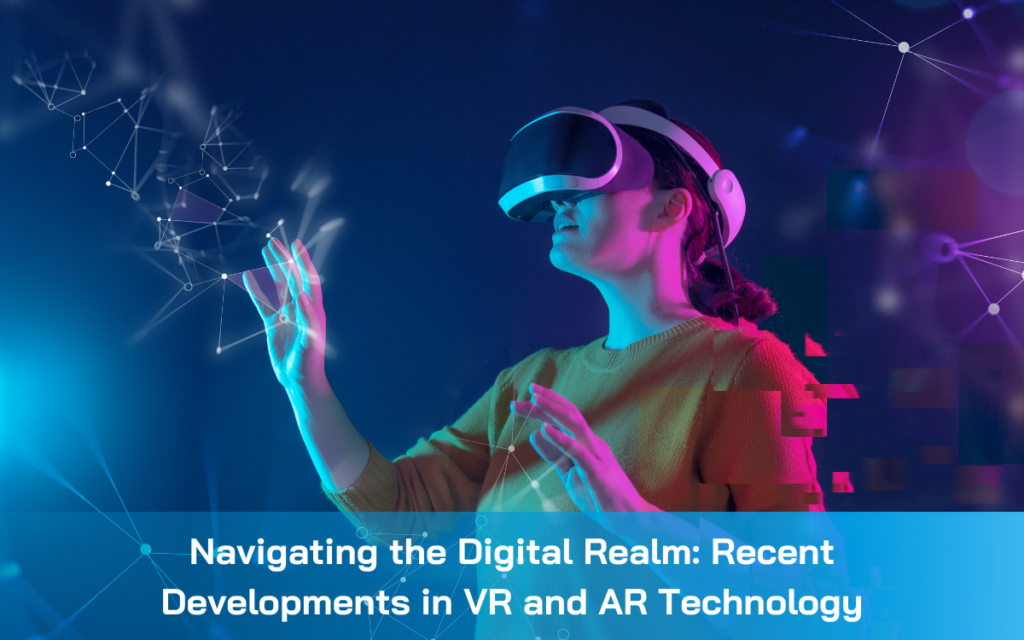Last Update: June 5, 2023

In the continuously evolving landscape of digital technology, Virtual Reality (VR) and Augmented Reality (AR) stand out as transformative forces. With applications ranging from gaming to training and remote collaboration, these immersive technologies are shaping our reality in unprecedented ways. This article delves into the latest developments in VR and AR, exploring their diverse applications and the future they hold.
Virtual Reality (VR) and Augmented Reality (AR) Explained
VR refers to a fully immersive digital experience that transports users into a simulated environment, while AR overlays virtual objects onto the real world, enhancing our perception of reality. Both technologies leverage high-performance computing and sophisticated display technologies to create interactive, sensory experiences.
Latest Developments in VR and AR
Advancements in computing power, graphics processing, and sensory technology have propelled VR and AR to new heights:
- Improved Wearable Tech: Modern VR and AR headsets are becoming more comfortable and user-friendly, providing higher resolution displays and more immersive experiences.
- Extended Reality (XR): This technology merges AR and VR, offering a seamless transition between the physical world and simulated environments.
- 5G Connectivity: The advent of 5G promises to boost VR and AR experiences with lower latency and higher bandwidth, enabling more realistic real-time interactions.
Applications of VR and AR
Gaming
VR and AR are revolutionizing the gaming industry by offering immersive, interactive experiences. With AR mobile games like Pokemon Go and VR games like Half-Life: Alyx, gamers can interact with virtual environments in more realistic and engaging ways.
Training and Education
VR and AR have proved immensely valuable in training and educational contexts. From surgical simulations in medical training to virtual field trips in classrooms, these technologies offer risk-free, immersive learning experiences.
Remote Collaboration
In the wake of remote work trends, VR and AR are playing a crucial role in facilitating virtual collaboration. Tools like Spatial enable teams to meet and interact in 3D virtual spaces, enhancing productivity and team engagement.
The Future of VR and AR
As VR and AR technologies continue to evolve, their applications will expand. We can anticipate even more immersive gaming experiences, advanced training simulations, and innovative remote collaboration tools. Furthermore, as the development of AR glasses progresses, augmented reality may become an integral part of our everyday lives.
The dynamic landscape of VR and AR technology holds incredible promise for our digital future. As these technologies mature, they will continue to redefine our perception of reality and transform a multitude of industries, ushering us into a new era of digital immersion.
Recent Posts
- The Importance of Digital Transformation in Today’s Business Landscape
- Micro-Interactions: The Little Web Design Elements with Big Impact
- Why Local Businesses Need Responsive Web Design Now More Than Ever
- Navigating the Digital Realm: Recent Developments in VR and AR Technology
- The 5G Revolution: Real-world Implications and Future Prospects
